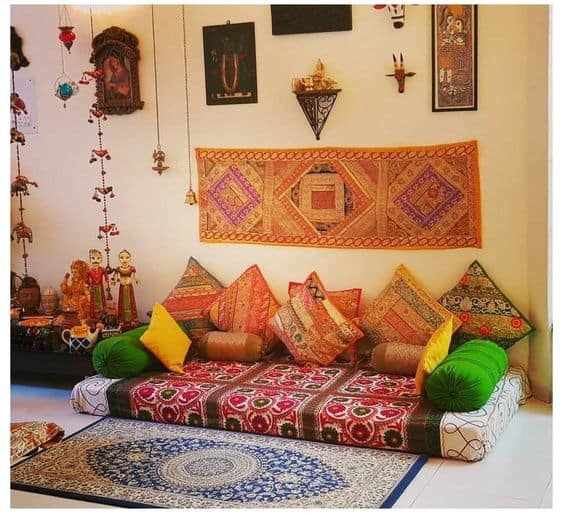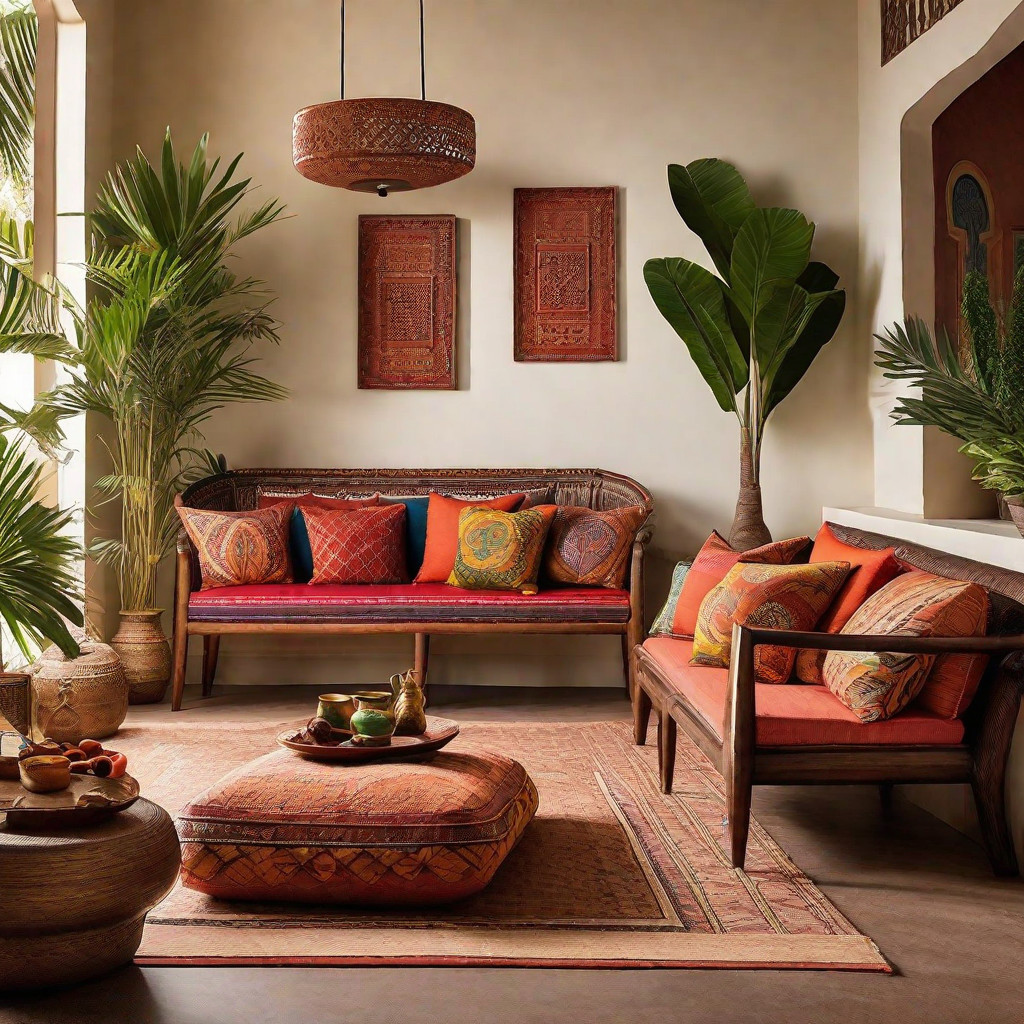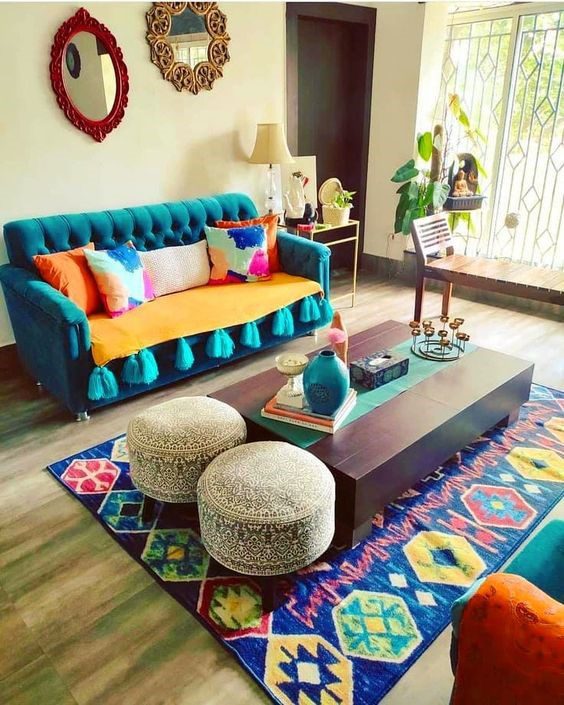When it comes to home décor, few cultures are as rich and vibrant as that of India. From intricate fabrics to exquisite furniture, Indian décor reflects a deep-rooted history and a unique aesthetic that captivates many. In this article, we’ll explore the various elements of Indian décor, share personal experiences to bring these themes to life, and provide you with practical tips to incorporate Indian styles into your own home. Whether you’re drawn to traditional motifs or modern interpretations, there’s something in Indian décor for everyone.
The Essence of Indian Décor
Indian décor is more than just furniture and accessories; it embodies a way of life, a story waiting to be told. With its diverse cultural influences, it provides a canvas for creativity and expression. Here’s a look at what makes Indian décor truly enchanting:
Historical Context
The roots of Indian décor can be traced back thousands of years, influenced by various dynasties, cultures, and religions. This rich history is reflected in the craftsmanship, motifs, and materials that define Indian home aesthetics.
Key Elements
- Textiles: From rich silk saris to block-printed cottons, textiles play a crucial role in Indian décor.
- Colors: Bold and vibrant colors like deep reds, rich golds, and lush greens create a warm ambiance.
- Artisan Craftsmanship: Handcrafted items showcase the skill and heritage of local artisans.

Types of Indian Décor Styles
Each region in India boasts its own unique style of decoration, influenced by local customs, materials, and weather. Here, we’ll delve into some popular Indian décor styles and their characteristics:

1. Traditional Indian Décor
This style is characterized by the use of handcrafted furniture, rich textiles, and traditional motifs. Key elements include:
- Wooden Carvings: Intricately carved wooden pieces are a staple.
- Brass Accents: Decorative brass items add a touch of elegance.
Pros and Cons of Traditional Indian Décor
| Pros | Cons |
|---|---|
| Timeless appeal | Can be expensive due to craftsmanship |
| Rich in cultural significance | Requires maintenance to preserve quality |

2. Contemporary Indian Décor
Modern interpretations of Indian décor blend traditional elements with contemporary design principles. This style often features:
- Minimalism: Clean lines and uncluttered spaces.
- Neutral Palettes: Soft colors contrasted with bold accents.
Pros and Cons of Contemporary Indian Décor
| Pros | Cons |
|---|---|
| Simpler maintenance | May lack the richness of traditional décor |
| Versatile and adaptable | Can sometimes feel impersonal |

3. Rustic Indian Décor
This style is perfect for those who love a cozy, homey atmosphere. It emphasizes the use of natural materials and simple designs:
- Reclaimed Wood: Often used for furniture and accents.
- Handmade Pottery: Adds an earthy feel to spaces.
Incorporating Indian Décor in Your Home

If you’re eager to add a touch of Indian flair to your living space, here are some practical tips to help you get started:
1. Choose a Focal Point
Start by selecting a key piece—like a traditional Indian tapestry or a statement brass lamp—and build your décor around it. This creates a cohesive look while showcasing your favorite elements.

2. Mix Textures and Patterns
Indian décor thrives on vibrant patterns and varied textures. Don’t shy away from mixing different textiles such as silk cushions, cotton throws, and jute rugs to create a layered, inviting space.
3. Layer Your Lighting
Lighting can significantly enhance the ambiance. Use a mix of ambient, task, and accent lighting to create warmth. Consider Moroccan-style lamps or traditional Indian lanterns for a delicate touch.
4. Use Color Wisely
Incorporate rich colors that promote warmth and comfort. Consider a palette of saffron, teal, and burgundy to evoke the essence of India while making your home feel inviting.
Popular Indian Décor Items and Where to Find Them
When looking to add Indian décor elements, consider sourcing items that reflect authentic craftsmanship. Here are some common items and suggested places to shop:
Textiles
Look for:
- Handwoven Rugs: Perfect for adding warmth.
- Prints & Cushions: Opt for traditional block prints.
Where to Shop: Local markets, online stores like Amazon or Etsy.
Furniture
Search for:
- Cane and Teak Wood Furniture: Offers durability and style.
- Chests and Cabinets: Great for storage and aesthetics.
Where to Shop: Specialized furniture stores and antique shops.
Accessories
Consider adding:
- Brass Statues: Ideal for a spiritual touch.
- Wall Hangings: Tapestries or paintings representing Indian culture.
Where to Shop: Online marketplaces or dedicated Indian handicraft stores.
The Cultural Significance of Indian Décor
Indian décor is not only about aesthetics but also about storytelling and cultural heritage. Each piece often carries a history and significance, making your home a reflection of a glorious past. Here’s a closer look:
Art and Craftsmanship
Many Indian décor items are handcrafted, showcasing exquisite craftsmanship. Supporting artisans sustains traditional skills that have been passed down through generations.
Symbolism in Design
Various motifs and designs in Indian décor symbolize different aspects of life, spirituality, and community. From peacock patterns representing beauty to lotus designs symbolizing purity, each piece tells a story.
FAQs about Indian Décor
What are the key characteristics of Indian décor?
The key characteristics of Indian décor include vibrant colors, rich textures, intricate patterns, and a strong influence of handcrafted art. Each element contributes to a warm and inviting ambiance.
How can I blend Indian décor with modern styles?
To blend Indian décor with modern styles, focus on using neutral palettes as a base and add Indian textiles or art pieces as accents. Mixing and matching patterns while maintaining harmony is key.
Are there specific regions known for unique décor items?
Yes, regions like Rajasthan are famous for textiles and handcrafts, while Kerala is known for intricate woodwork and coir products. Each area has its distinct style reflecting local culture and traditions.
Can Indian décor be expensive?
While authentic handcrafted items may have a higher price tag, there are budget-friendly options available. Consider looking for local artisans or markets, which often offer unique finds at various price points.
What is the best way to maintain Indian textiles?
To maintain Indian textiles, avoid excessive exposure to sunlight to prevent fading. Hand wash or dry clean delicate fabrics, and store them properly to ensure longevity.
Conclusion
Indian décor offers a unique blend of tradition, culture, and artistry that can bring warmth and vibrancy to any home. By incorporating elements of this enchanting style, you not only beautify your space but also embrace a rich heritage that resonates with many. Whether you prefer the timeless charm of traditional décor or the sleek lines of contemporary design, Indian elements can complement and enhance your personal style. With the insights shared in this article, you are now equipped to embark on your journey of creating a home that reflects the beauty of Indian artistry.